
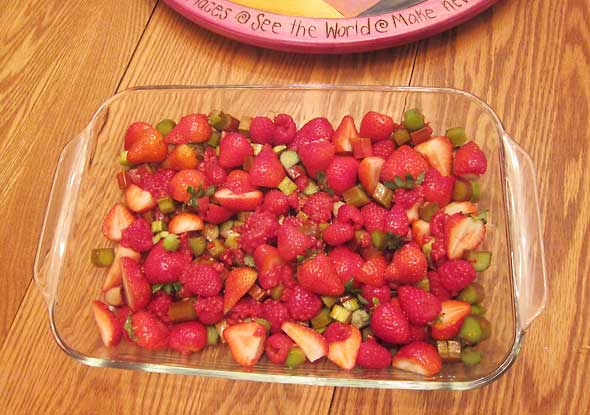
BLOG-A living legacy from Grandpa’s garden
- Published: September 8, 2012
 Over the Labor Day weekend, I took the family to the area where I grew up, the Susquehanna Valley of Upstate New York. While we were there, we visited my 93 year old grandfather. Grandpa Wendell is a life long gardener. Each year, his vegetable patch offers tasty tomatoes, beets, corn, cabbage, beans, and rhubarb. Oh, and his pickles are the best.
Over the Labor Day weekend, I took the family to the area where I grew up, the Susquehanna Valley of Upstate New York. While we were there, we visited my 93 year old grandfather. Grandpa Wendell is a life long gardener. Each year, his vegetable patch offers tasty tomatoes, beets, corn, cabbage, beans, and rhubarb. Oh, and his pickles are the best.
We attribute Grandpa’s resilient health to his gardening. He plants and weeds, then picks and cans his own produce. Grandpa Wendell gave me my first lesson in canning something I hope to be doing well into my 80s and 90s.
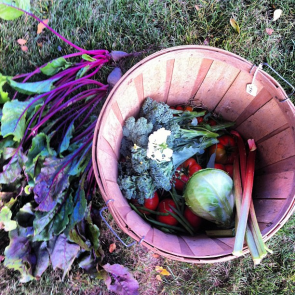 On this visit, we helped him harvest. While we busied ourselves in the garden catching up on the family news, my five year old announced that she was prepared to work hard in the garden and gamely picked broccoli and cherry tomatoes. Grandpa chuckled at her young confidence, and I was happy for his fine example to her.
On this visit, we helped him harvest. While we busied ourselves in the garden catching up on the family news, my five year old announced that she was prepared to work hard in the garden and gamely picked broccoli and cherry tomatoes. Grandpa chuckled at her young confidence, and I was happy for his fine example to her.
In the news this week, several articles discussed a recent study investigating the nutritional value of organic foods compared to conventionally grown foods. The study reported inconclusive results, and most articles broke the “bad” news to consumers. The results, however, are hardly unexpected. Nutritional value depends on many factors, and other important constraints like relative freshness and growing conditions were not controlled. Of course, the results on nutrition were inconclusive.
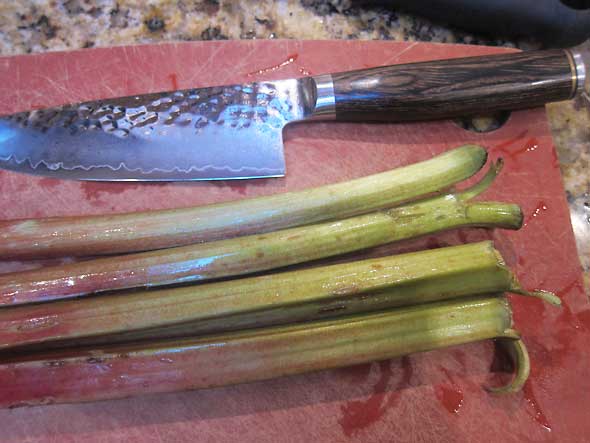
What the study support is the good news about organic food: The level of residual pesticides and chemicals is much lower in organic food than in foods produced by chemical agriculture. Indeed, the principle goal of organic farming is the reduction of man made chemicals in our food system. Less chemicals means safer work conditions for gardeners, agricultural workers, and their distributors, a cleaner environment, and safer food at the dining table. If you want high quality, high nutrition, excellent flavor served with the ecological benefits of organic food, look for produce that is grown locally. Local foods deliver for the taste buds, the local economy, and provide the health benefits of more nutritious fresh food.
Grandpa Wendell introduced me to fresh rhubarb some 15 years ago. He has a lovely patch which needs thinning on most of our visits. I adore rhubarb pie but, when I set out to cook my first handful of stems from his garden, I wanted a simpler dish. I found my joy in a 1995 Cooking Light article featuring Honey-Rhubarb Crumble. From the get go, I have added berries to the recipe. Let’s be honest: 5 cups of rhubarb is a lot of stems, and that much rhubarb would likely make a dish too tart for me.
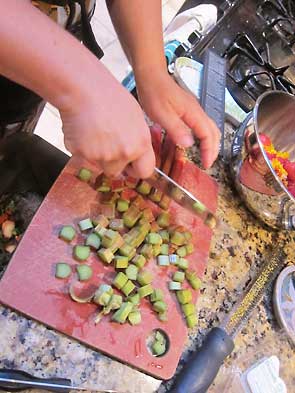
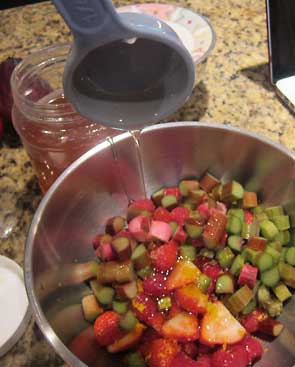
Indeed, as I cut into this week’s harvest of rhubarb stalks, I inhaled their intense tartness. We paired the rhubarb with organic produce from Tom’s Market: strawberry, raspberry, and an orange for its zest. As I removed the orange’s bright peel, I was grateful—for myself and my young children—in knowing it was untainted with pesticides. In addition, its color was intense—its essence adding to the pleasure of cooking and the anticipation of the final dish.
We drizzled local honey from White Mountain Farm on top and spread the doused berries in their baking pan. My husband topped the berries with the oatmeal mixture and placed the crumble in the oven to bake while the rest of the family danced. The crumble—still warm from the oven—soon disappeared at the welcome back gathering for our church choir.
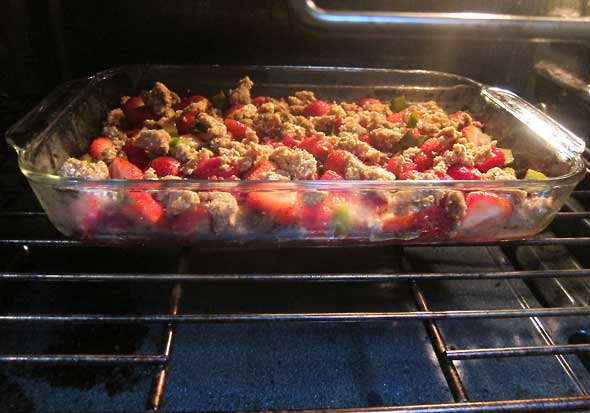
How fun it was to share the blessings of Grandpa’s garden. His living legacy is found in the physical benefits and joys of organic gardening. It is a remarkable lesson in living long and living well.
The Yellow Springs News encourages respectful discussion of this article.
You must login to post a comment.
Don't have a login? Register for a free YSNews.com account.













No comments yet for this article.